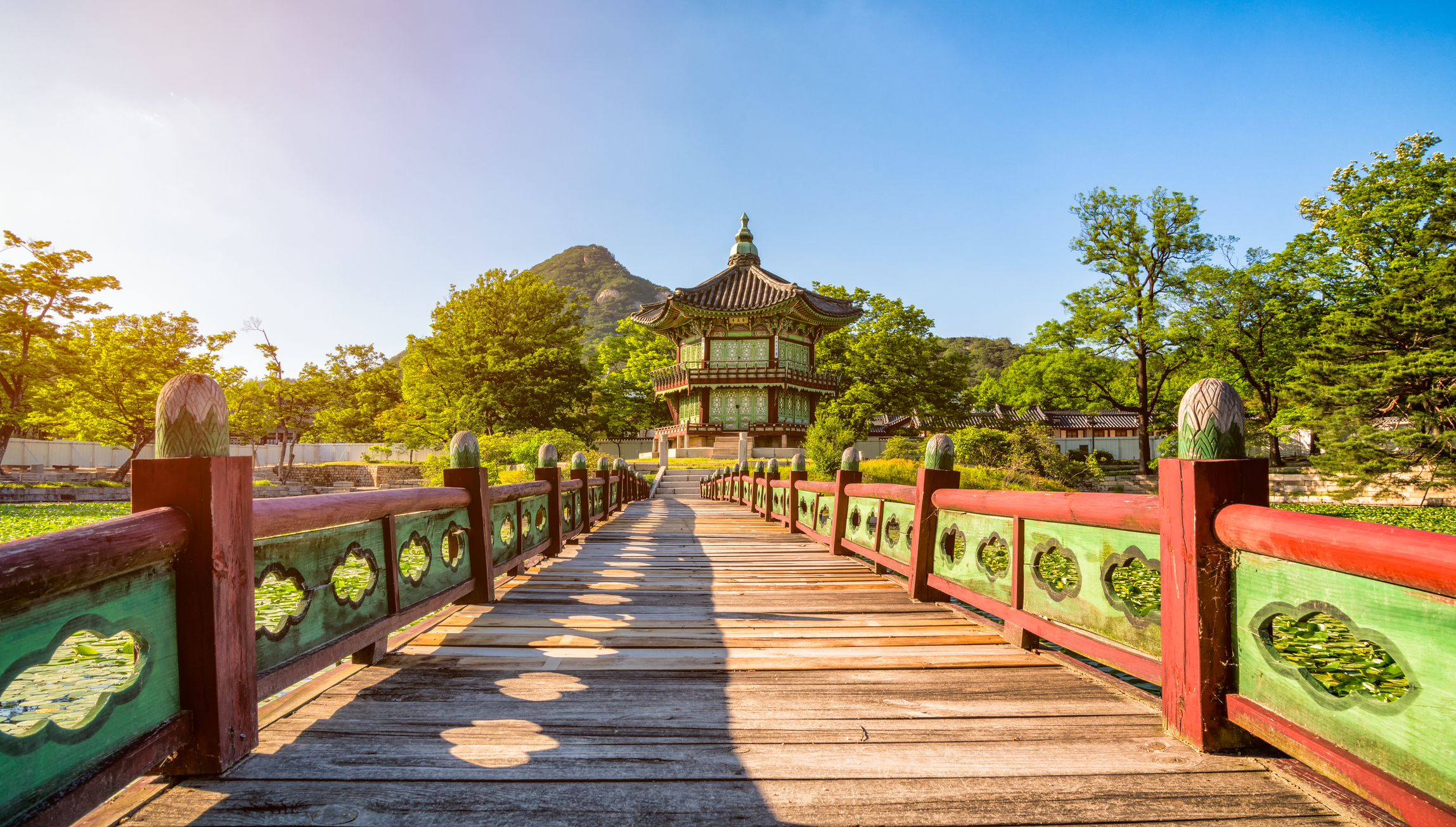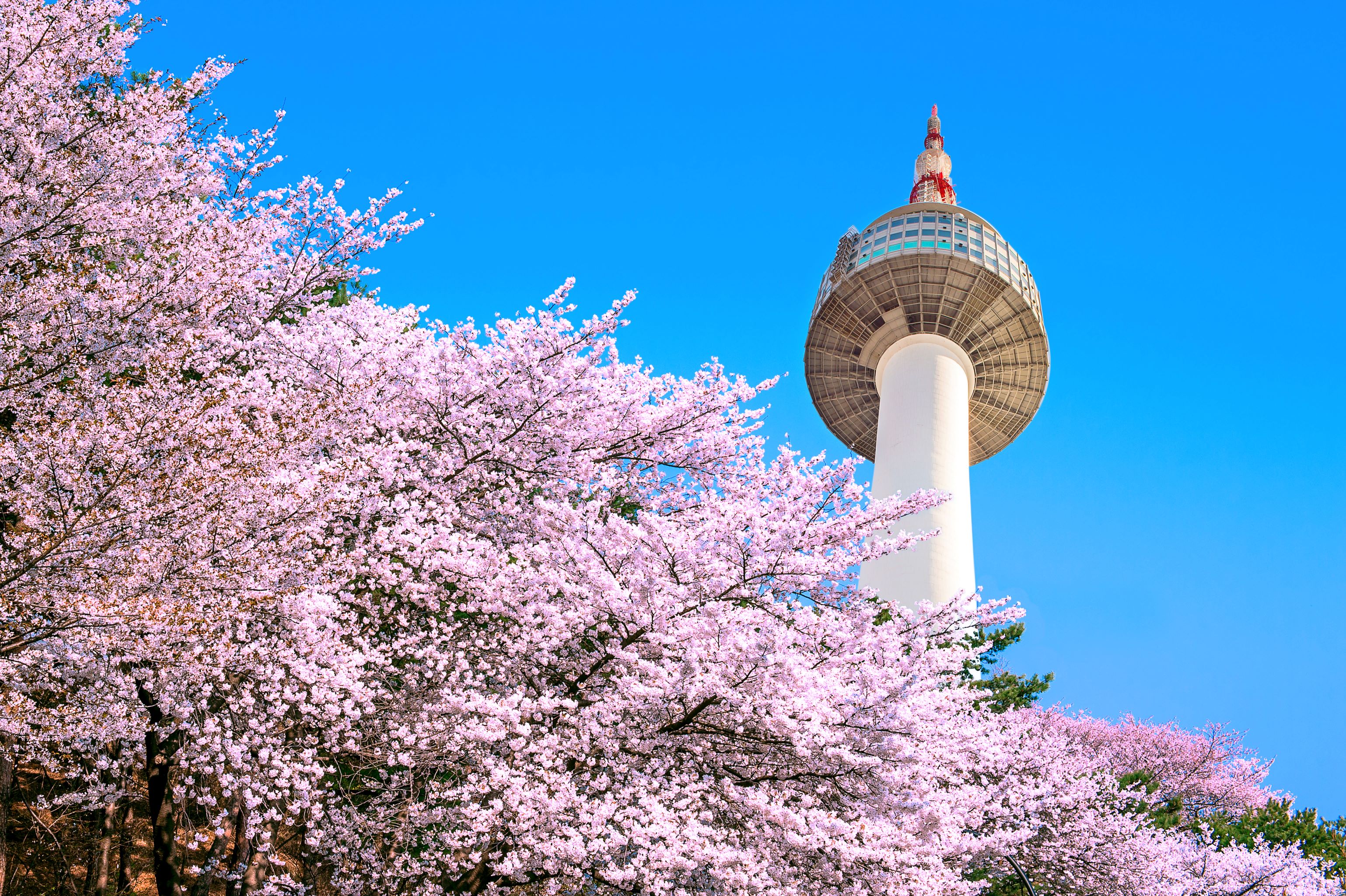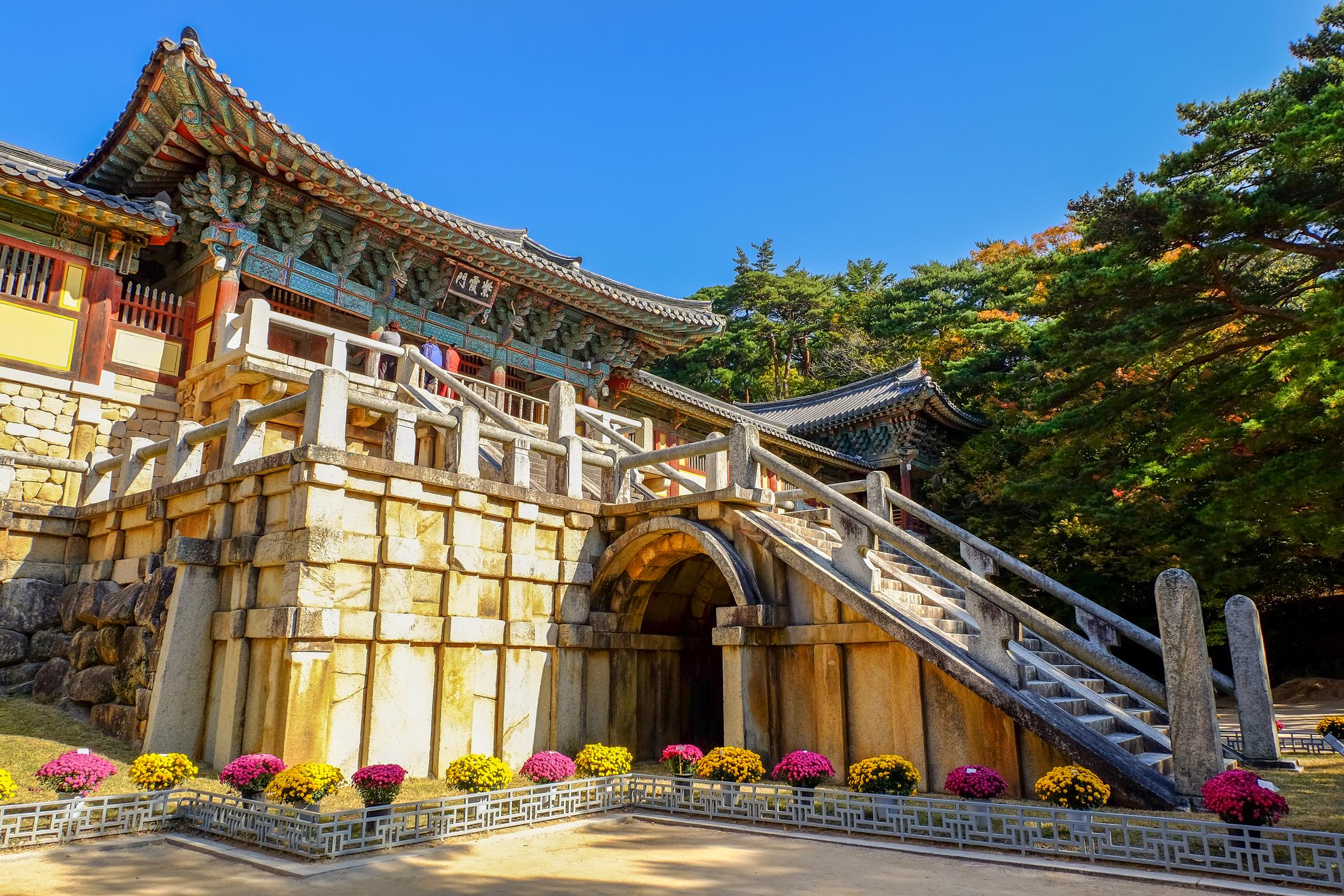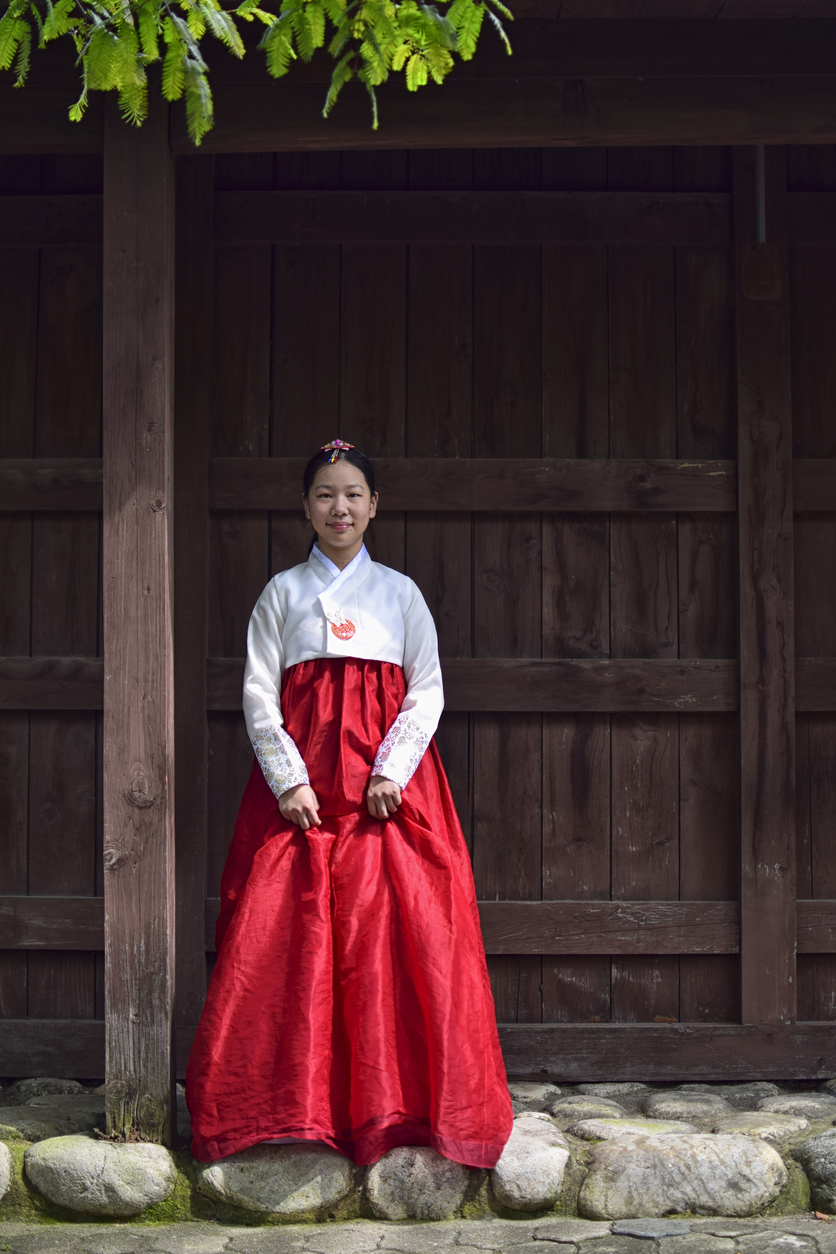
Holidays to South Korea
South Korea somehow escaped the attention of international travelers for far too long, but the secret is now out – people are now coming from all over to see and enjoy this charming, quirky, super-friendly little slice of the Far East.
Read moreTrip ideas

"Having been lucky enough to live, study and work in Korea, there are so many things about it I love.
Firstly, it's a genuinely 24/7 place. There's always something fun to do: at any time of day or night you can find great coffee, grab snacks from a convenience store, or sing your heart out at a karaoke room.
It's also packed with cultural contrast. Not a day goes by without at least one double take: because you've spotted a Buddhist monk texting on their smartphone, or clocked towering sky-scrapers on the horizon of traditional hanok village.
And of course, it's worth visiting just for the Korean BBQ. There's nothing like experiencing a culture through its food - and, in Korea, food is serious business"
Planning your holiday to South Korea
Best time to visit South Korea

There's no short answer to 'when's the best time to plan a holiday to South Korea'. You can read our popular blog - and we will be creating a month by month breakdown of amazing things you can do throughout the year.
Why visit South Korea?
It begins with a palpable sense of excitement, a blast of colours, sounds, and smells that hits you as soon as you step onto its frenetic city sidewalks. Saccharine K-pop choruses warble from cell phone shops, intermingling with the rush of traffic and trains, laughter of students, and street vendors shouting out their latest deals. The aroma of grilled meat and fresh seafood fills the air in the thrumming alleys and traditional markets, while at night the streets are awash in the vivid glow of neon signs from the seemingly infinite array of restaurants, bars and karaoke rooms.
South Korea is alive, 24/7. This is a country in perpetual motion, where bali-bali! (quickly!) is the name of the game. Everyone who isn't on the go seems to be engaged in work, study, or boisterous recreation, and like much of East Asia, it's often crowded, with people hustling and jostling. The Western concept of space is foreign here, which adds to the overall energy, resulting in a thrilling sense of possibility. South Korea is a place that really gets your blood pumping.
What makes holidays to South Korea so special?
For over 5,000 years, South Korean people have managed to carve out their own way in an often hostile world. The result is a country and culture steeped in pride that – while sharing some traits with others in the region – manages to be utterly unique.
While cherry blossoms viewing spots, vibrant cities, and tantalising food may draw you here, it’s the unprepared-for things – intriguing folklore, rugged countryside, and gregarious locals that’ll capture your heart during one of our South Korea holidays.
For whatever reason – call it cultural zeitgeist, serendipity, or just pure timing – the country is having a moment. South Korea, it seems, has arrived. This makes now a great time to go.
Reasons to go to South Korea
From ancient palaces and Buddhist temples to outdoor adventure on Jeju Island, here are our top 10 reasons to go to South Korea - look no further for travel inspiration for your next holiday.
South Korean food

Pungent, spicy, sour, salty, and sweet, South Korean food is bold and defiant, reflecting a culture that has managed to survive and thrive over millennia. Food is central to life in South Korea: everything revolves around a meal - and the first question you're likely to field as a visitor is, “have you tried kimchi?”
Kimchi: the nation's pride
Kimchi, of course, is at the heart of South Korean identity. Made from cabbage, garlic, anchovy sauce, and gochujang (a deep red chilli paste), it ranges in spiciness from mild to atomic and is served with almost every meal. To enjoy kimchi is to honor Korea in the eyes of the locals - and your trip won't be complete without trying it.
More than food: a way of life
Sitting down to eat can feel like a party in South Korea. The scent of barbecue smoke hangs in the air and almost everything is shared, making the meal feel like a celebration. Pull up to a table with a grill in the middle, succulent cuts of pork or beef sizzling with onions, and a colourful array of side dishes and ice-cold bottles of beer.
Koreans aren't shy about diving in; they eat like they mean it, and around you packs of diners will be doing the same, punctuated by the sound of conversation, big laughs, and the clink of soju glasses.
Understanding South Korea's rich history
In the years following the devastation of the Korean War, South Korea was a country synonymous with poverty. It wasn't until the 1988 Seoul Olympics that people began to see it in a different light, and by the early 2000s, South Korea could count itself among the top economies in the world.
This rubble-to-riches story has been one of the most extraordinary transformations in human history, resulting in affluence unimaginable by the generation that survived the country's baptism by fire. Once an East Asian backwater, South Korea is now an international hub of commerce, technology, and, most recently, entertainment. While known for its microchips, cars and cell phones, South Korea's now equally famous for its films, TV dramas and K-pop, which are exported all over the globe.
This is a nation that clearly punches above its weight.
North and South Korea history
While the Korean War is a fading memory for many, it remains very much alive along the South's border with the North. Just an hour away from the glittering N Seoul tower is another world — a place of weapons, watchtowers, fences and land mines. The Korean Demilitarized Zone, or DMZ, is an 155-mile barrier that cuts a swathe across the whole of the peninsula – and despite being a tense, dangerous place, it's also home to a rich variety of wildlife, acting as a kind of green belt separating the North from the South.
While the DMZ remains a source of great sadness for the Korean people, it's definitely worth checking out, if only for its unmistakable strangeness. The memory of gazing across the Military Demarcation Line that bisects the two Koreas will stay with you for a lifetime.
Frequently asked questions
Is South Korea safe?
On the whole, yes. South Korea’s crime rate is one of the lowest in comparison to other developed countries and South Korean people are generally friendly and welcoming to tourists. We'd advise general caution - traffic can be busy, downtown crowds can be lively, and mopeds are everywhere!
Public demonstrations are common in South Korea, particularly near the US Embassy and Seoul City Hall. Although largely peaceful, avoid these areas when demonstrations are taking place.
Is South Korea expensive?
Visiting Korea is possible at varying levels of budget, although price-wise, it is more comparable to visiting Japan than Southeast Asia. While it's certainly possible to go out and spend a month's salary at one of Seoul's most exclusive restaurants, it's equally possible to get an excellent meal for less than GBP10/US$15, or to get across Seoul on the subway for less than GBP1.50/US$2.50.
Day-to-day expenses for travelling in Korea are often no more expensive than in Europe or North America, and often less so.
Do Koreans speak English?
Korean schools teach English and many Koreans study English abroad, too. In places like Seoul, you may come across quite a few English speakers, but outside of the capital it will be more limited. You'll find signs in English and Korean people are kind and helpful - we’ll also be on hand to help during your trip, and can recommend several English apps that’ll help you navigate the country.
Why book with InsideAsia?
You know what you want, and your personal Travel Consultant knows how to make it happen - it's a match made in heaven
From your first call until you arrive home, we’re there whenever you want us — and never when you don’t.
88% of our customers rate our service as "excellent" — and that’s what we always strive to be.
Which is why all our trips are carbon-negative and bring real benefits to communities across Asia.
















